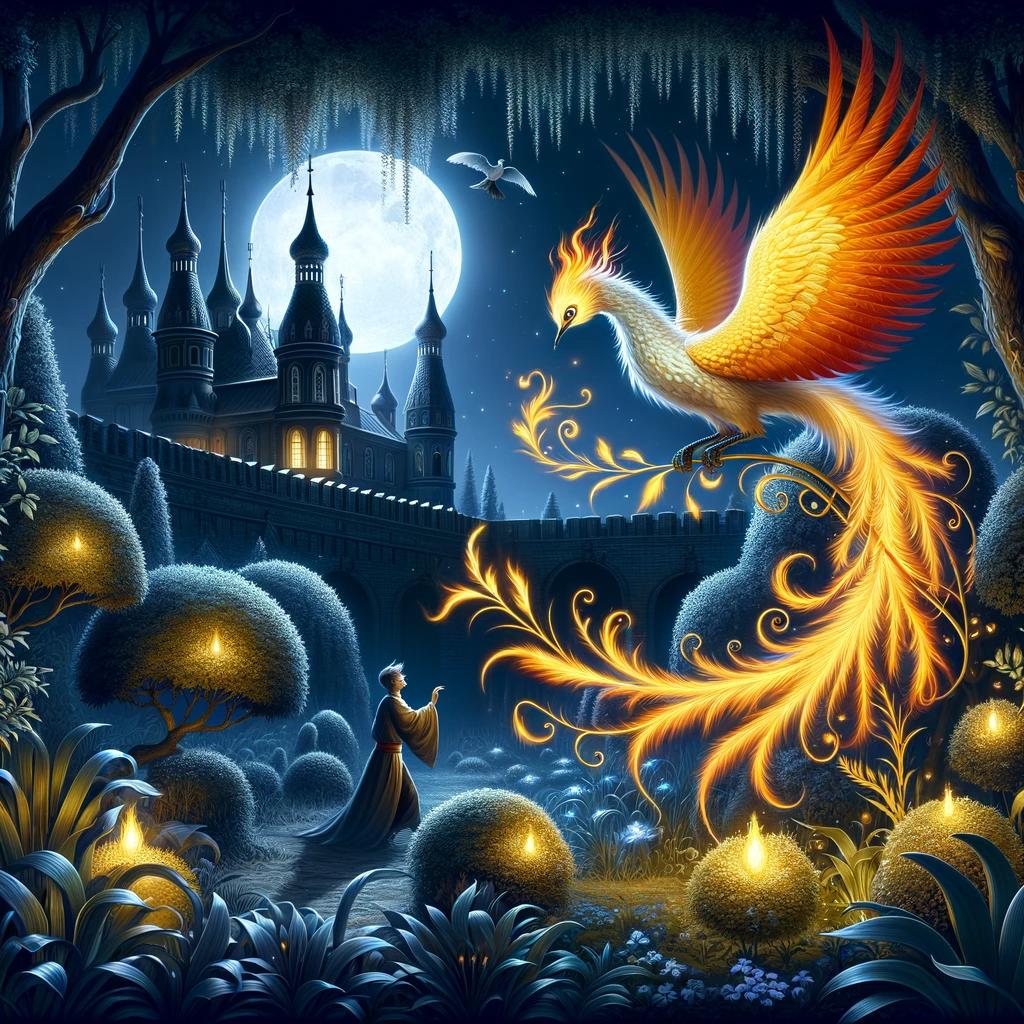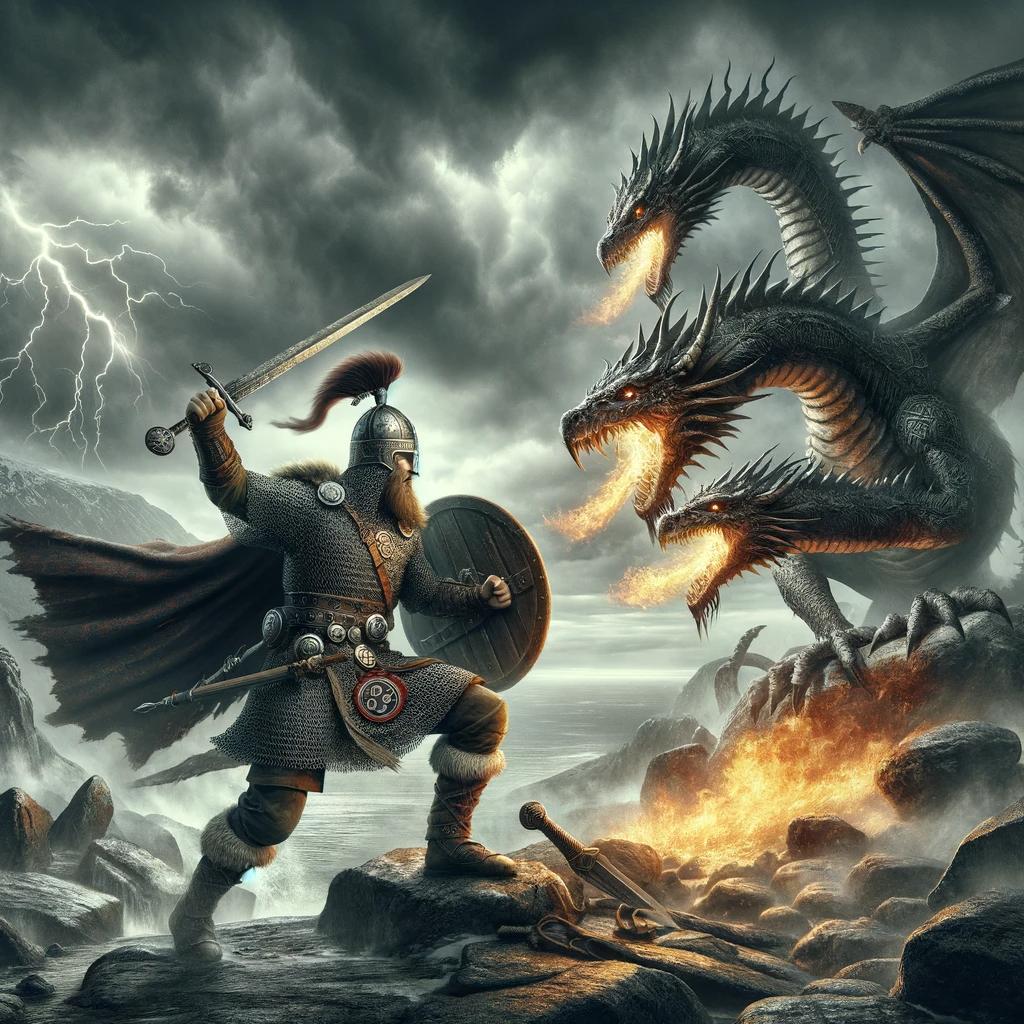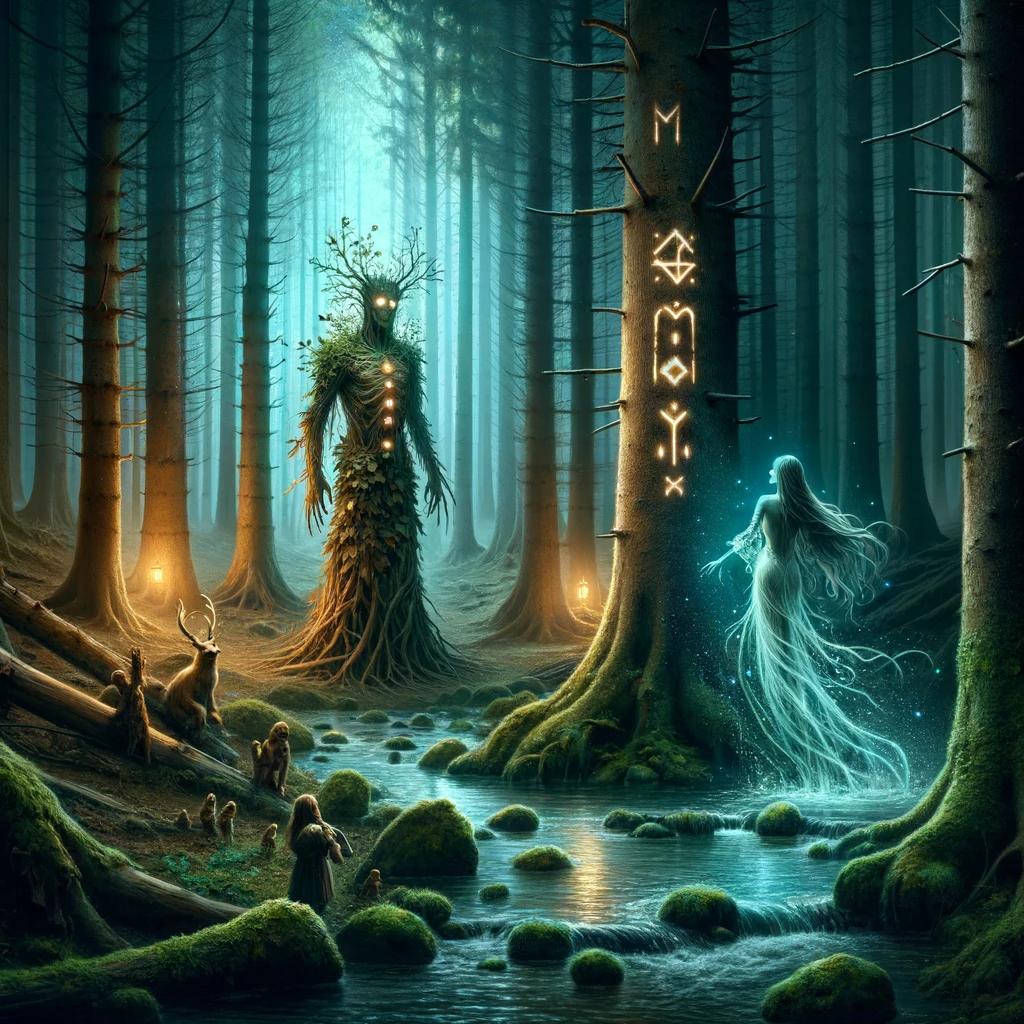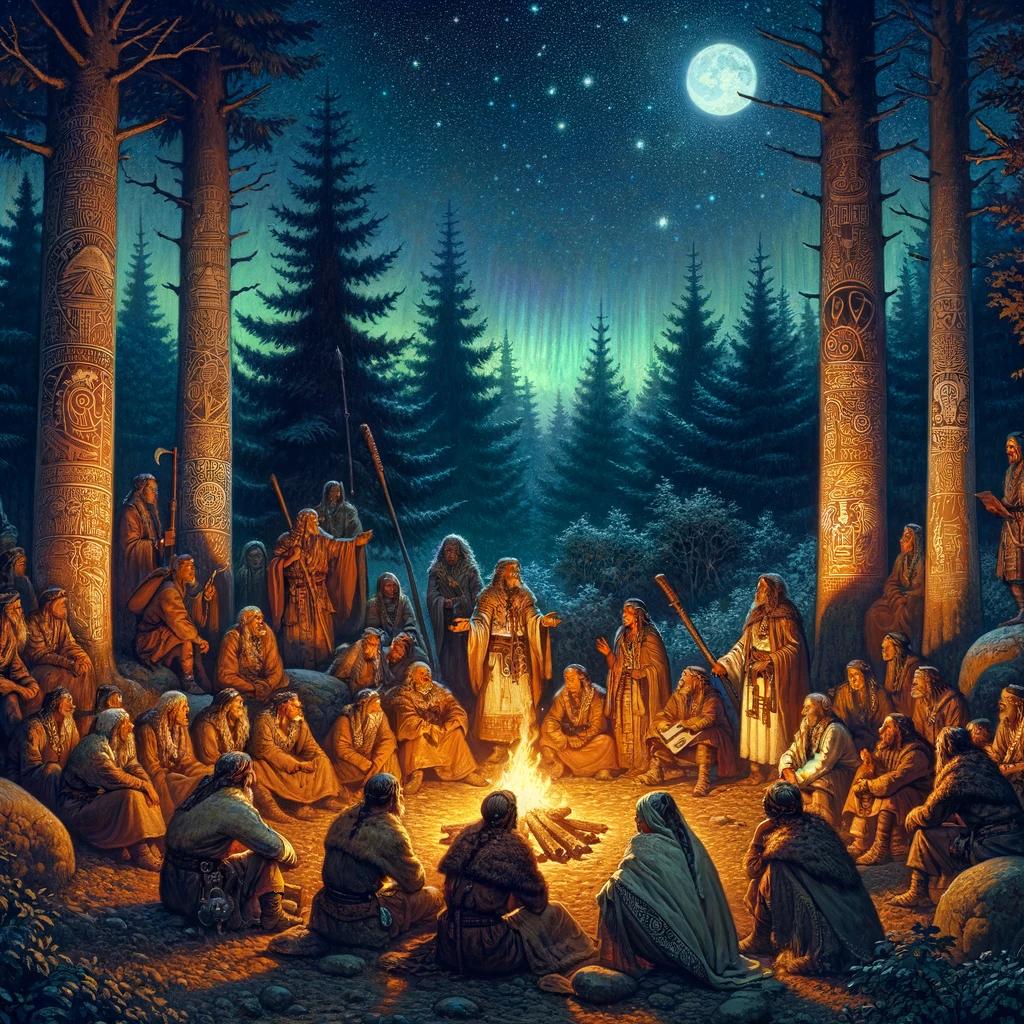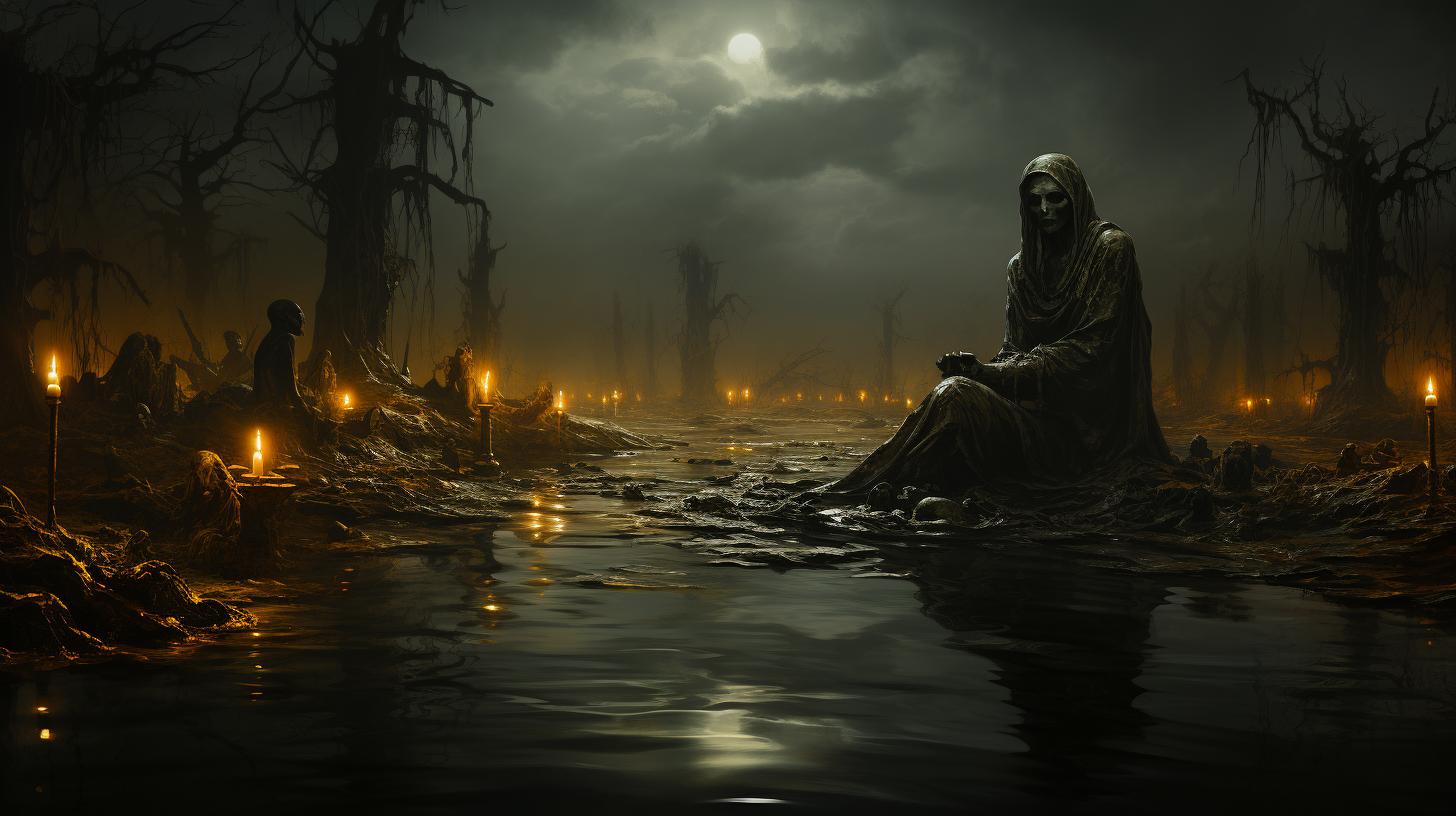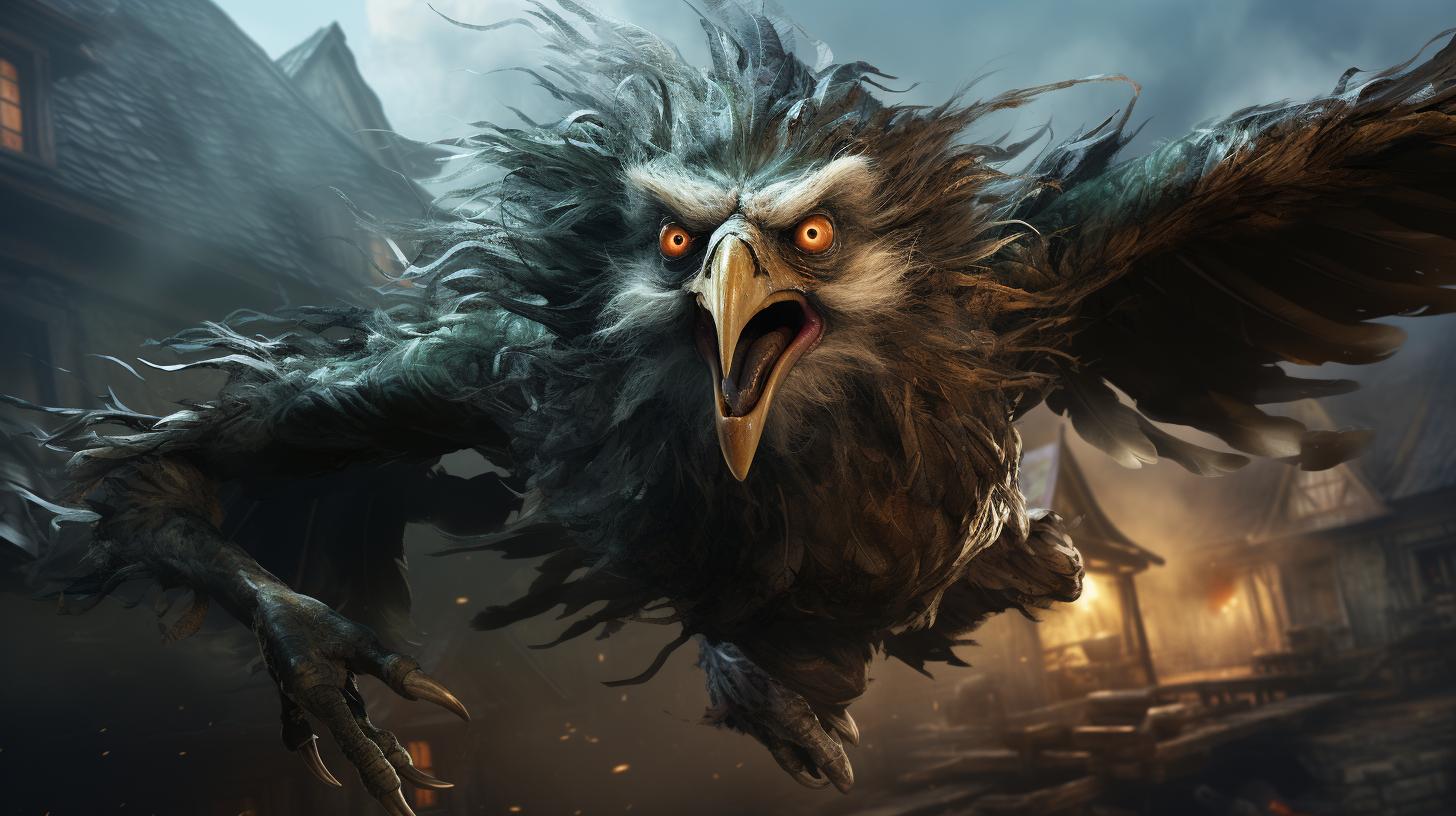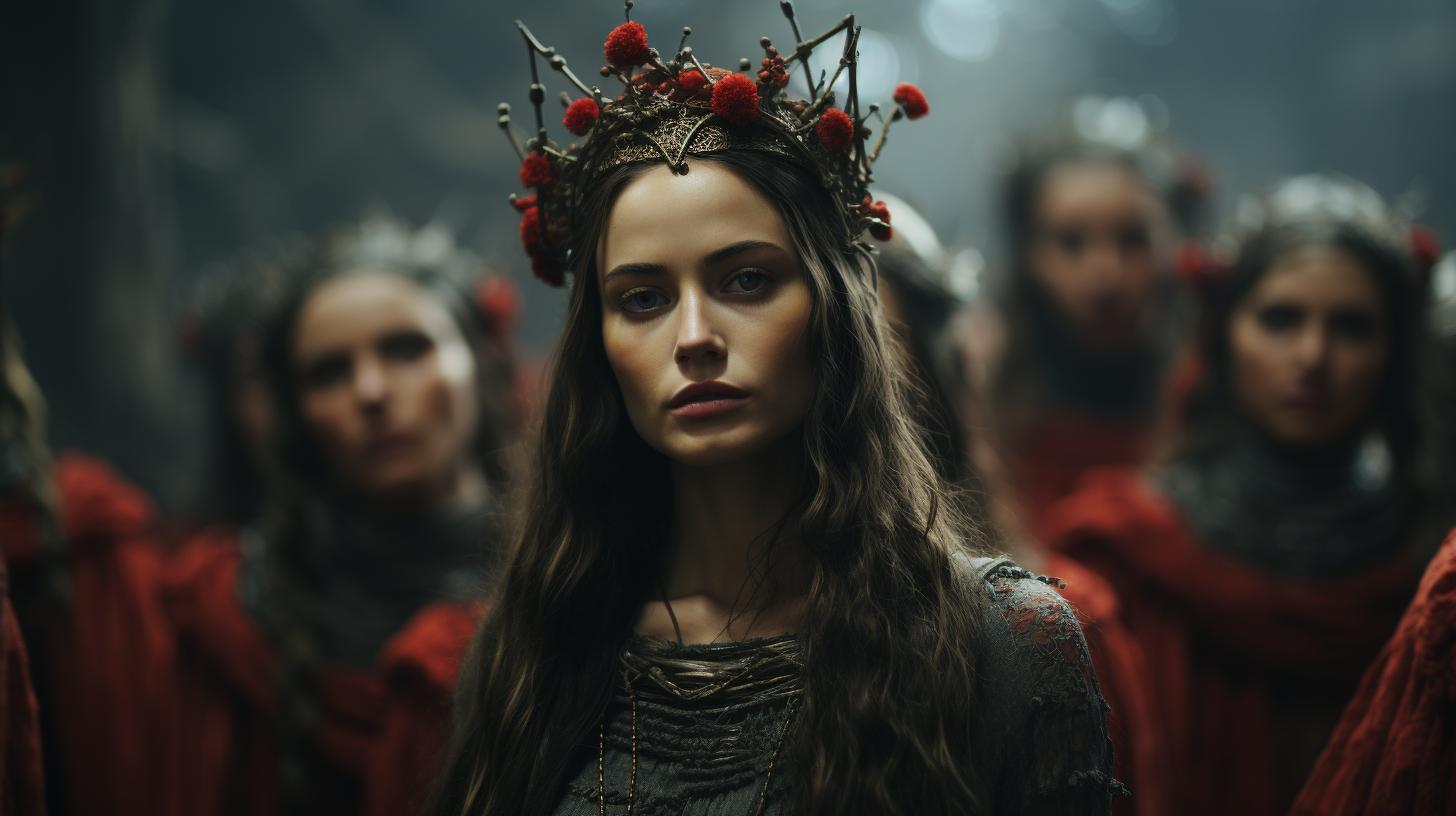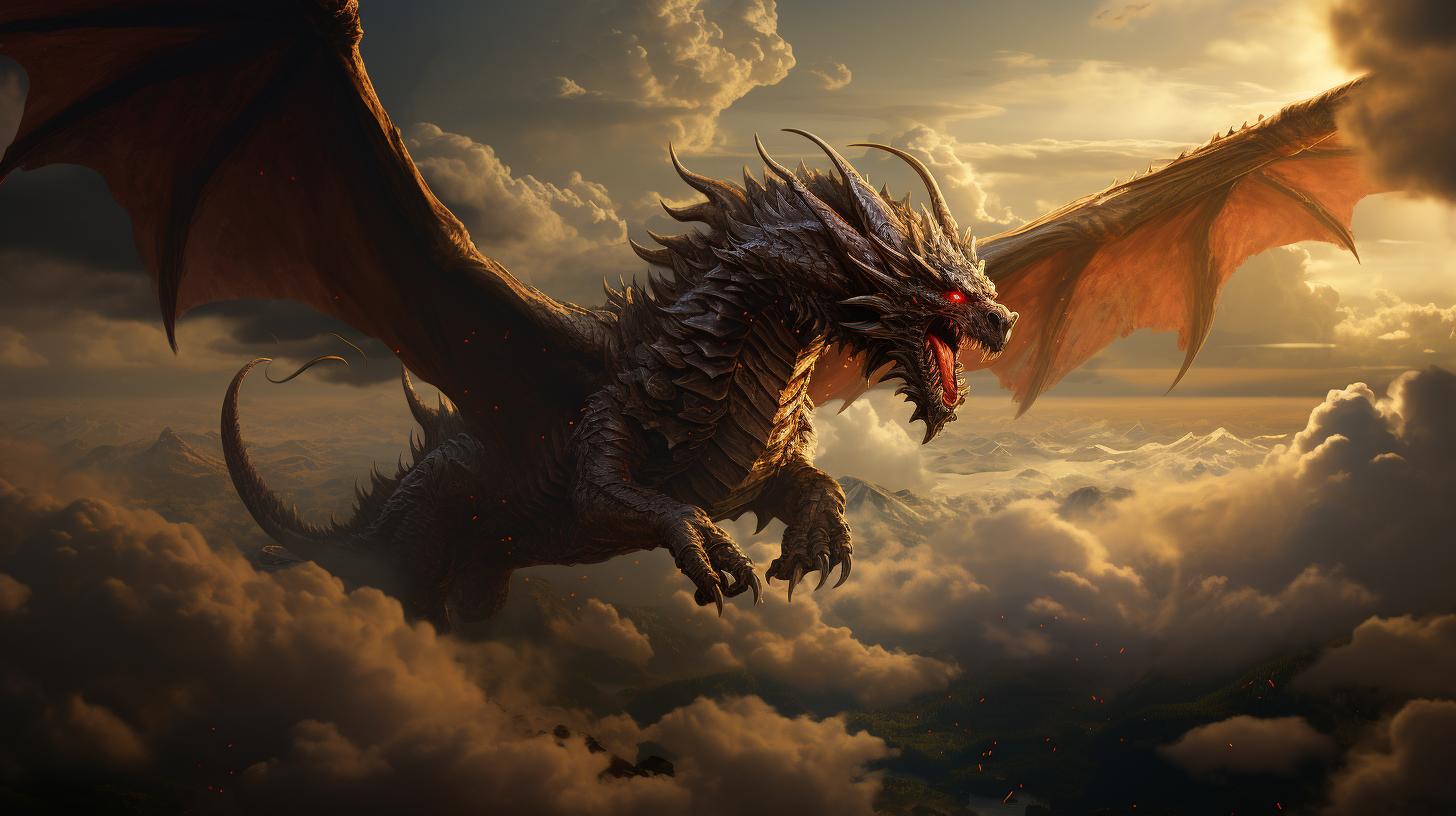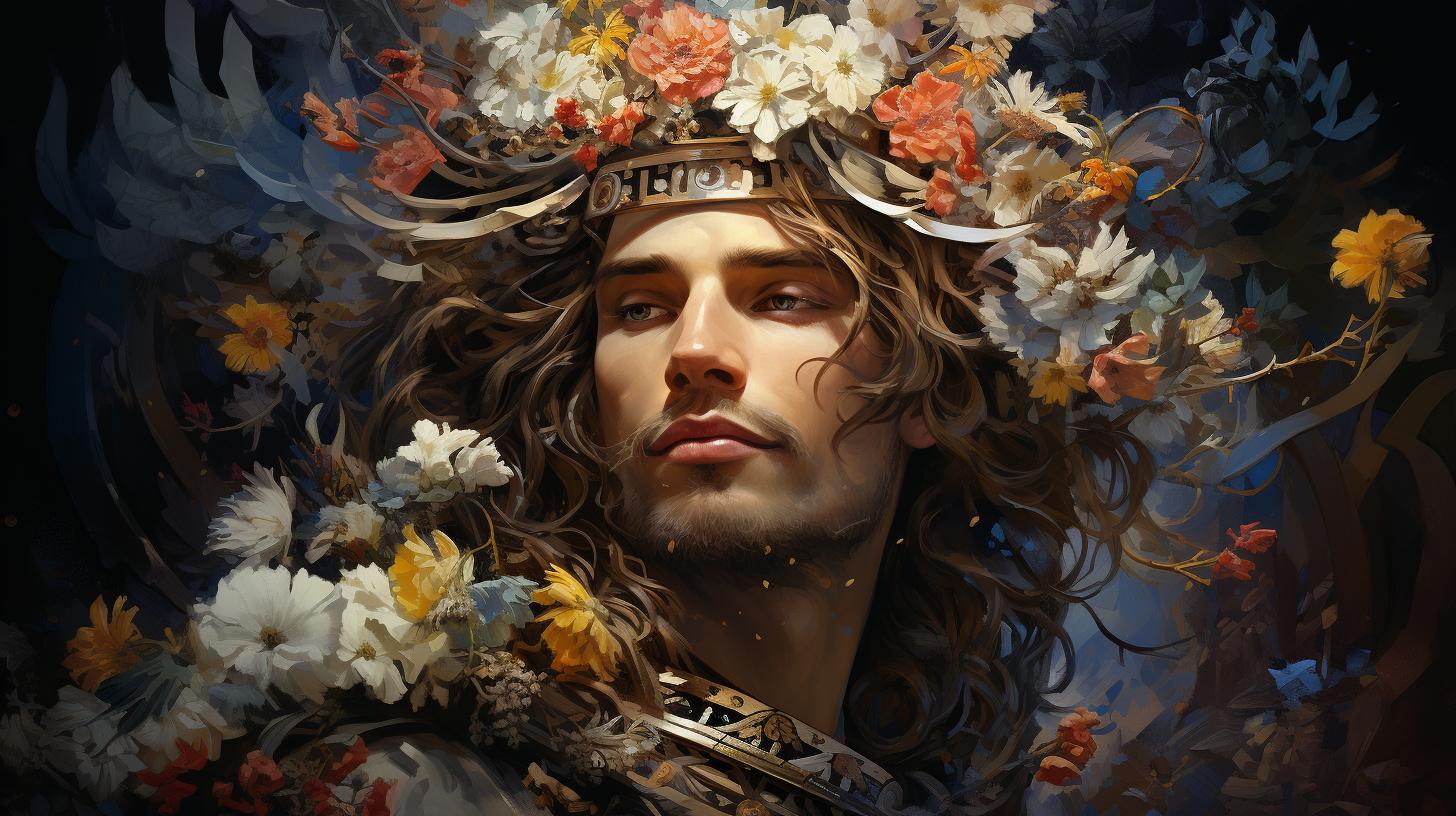Slavic Mythology Stories: Exploring the Rich Tales of Slavic Folklore
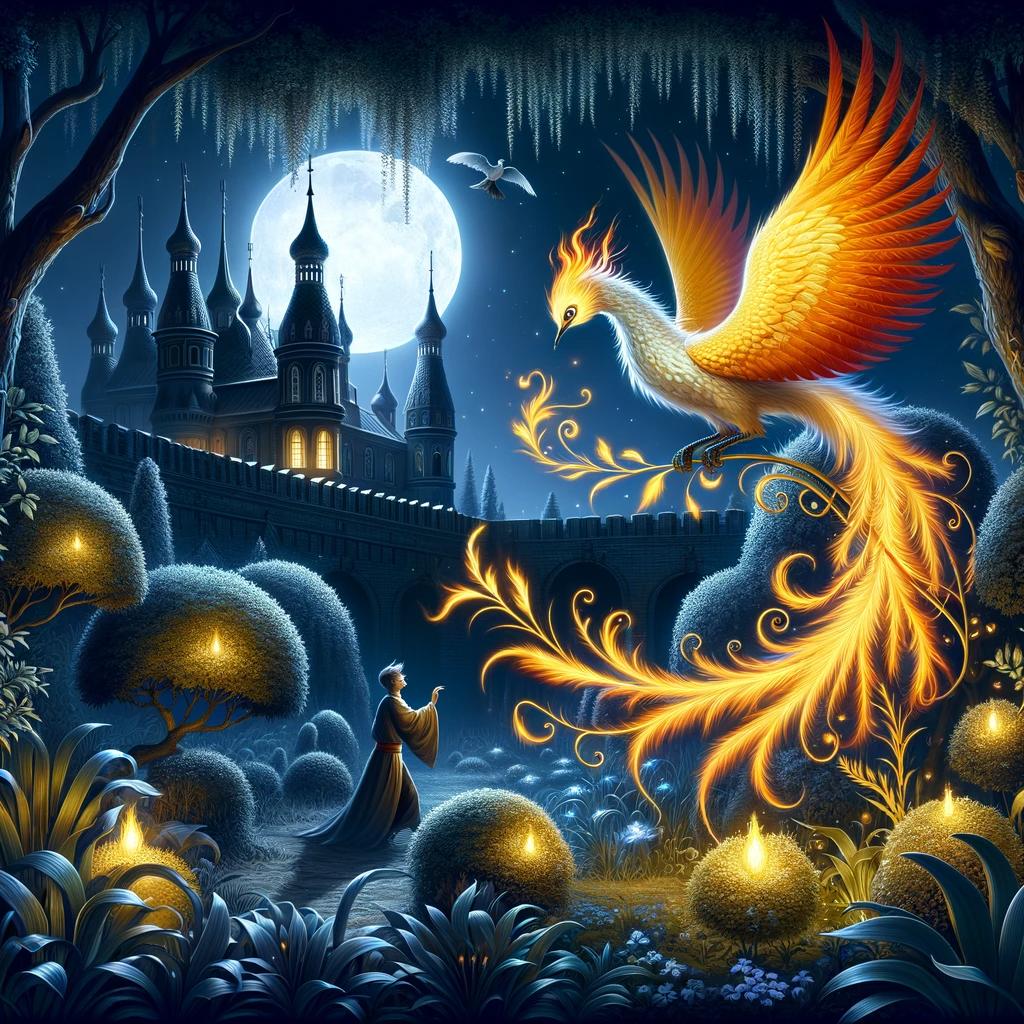
Slavic Mythology Stories provide a captivating glimpse into the rich folklore of Slavic cultures. From powerful gods like Perun and Veles to mystical creatures like Baba Yaga and the Vila, these tales are steeped in ancient traditions and beliefs.
Explore the myths, legends, and magical beings that have shaped the Slavic worldview for centuries. Discover the influence of Slavic mythology on art, literature, and popular culture. Dive into the enchanting realm of Slavic mythology and uncover the wonders that lie within its stories.
Slavic Gods
The mythology of the Slavic people is rich with a diverse pantheon of gods and goddesses, each with their own unique powers and attributes. These deities serve as intermediaries between the mortal realm and the spiritual world, and their stories showcase the beliefs and values of the ancient Slavic civilization.
In this section, we will explore the fascinating world of Slavic gods and their significance in mythology.
Introduction to Slavic Pantheon
The Slavic pantheon is a complex and intricate system of gods and goddesses that were worshipped by the Slavic tribes. These deities were associated with various aspects of life, including nature, fertility, war, and the afterlife.
Understanding the structure of the pantheon is crucial to comprehending the interconnectedness of Slavic mythology and the roles played by individual gods and goddesses.
Perun: The Supreme Deity of Thunder and Lightning
Perun holds a significant position in Slavic mythology as the supreme god of thunder and lightning.
Revered for his immense power and control over the natural elements, Perun is often depicted as a strong warrior with a mighty hammer. His role symbolizes protection, justice, and the preservation of cosmic order.
Veles: The Chthonic God of the Underworld
Veles is a chthonic god in Slavic mythology, associated with the underworld, fertility, and wealth. He is often portrayed as a serpent or a dragon and represents the forces of chaos and the mysteries of the earth.
Veles plays a crucial role in the cosmic balance, acting as a counterpart to Perun and representing the cycle of life, death, and rebirth.
Lada: The Goddess of Spring and Fertility
Lada, also known as Svetlana, is the Slavic goddess of spring, love, beauty, and fertility.
She personifies the rejuvenation of nature and the arrival of abundance after the harshness of winter. Lada is worshipped for her role in ensuring successful harvests, prosperous unions, and the continuation of life.
Svarog: The God of Sun and Fire
Svarog is a prominent deity in Slavic mythology, associated with the sun, fire, forging, and craftsmanship. He is revered as the divine blacksmith, responsible for creating the world and shaping the cosmos.
Svarog represents the creative forces of transformation, enlightenment, and the eternal cycle of life.
Dazhbog: The God of Sun and Light
Dazhbog, also known as Belobog, is the god of the sun, light, and goodness in Slavic mythology. He is believed to bring happiness, prosperity, and enlightenment to those who honor him.
Dazhbog is associated with purity, truth, and the benevolent forces of the universe, illuminating the path towards a harmonious existence.
Slavic Mythology
Slavic Mythology is a rich tapestry of ancient beliefs and legends that have shaped the cultural identity of the Slavic peoples. This section explores the fascinating world of Slavic myths, delving into various aspects of their cosmology, deities, heroes, and mythical creatures.
Overview of Slavic Mythology
Slavic Mythology encompasses a vast array of myths and folklore originating from the Slavic regions. It encompasses stories that explain the creation of the world, the relationships between gods and humans, and the natural forces that govern existence.
Creation Myths and Cosmic Order
Slavic Creation Myths provide insights into how the universe came to be and the balance of cosmic order. These captivating stories explore the origins of the world, the emergence of gods and creatures, and the foundational principles that govern the harmonious functioning of the universe.
Gods and Goddesses in Slavic Mythology
Slavic Mythology is replete with a pantheon of gods and goddesses, each embodying unique powers and characteristics. From supreme deities overseeing natural forces to deities associated with specific domains such as fertility, sun, fire, and water, these divine figures played crucial roles in the lives of the ancient Slavic people.
Heroes and Demigods in Slavic Mythology
Heroes and demigods hold a significant place in Slavic Mythology, often serving as intermediaries between gods and humans. These legendary figures embarked on epic quests, championed causes, and possessed extraordinary abilities, captivating the imagination of the Slavic people.
Creatures and Monsters in Slavic Mythology
Slavic Mythology is teeming with a diverse array of creatures and monsters that both fascinated and terrified ancient Slavic communities. From benevolent spirits and shape-shifting beings to fearsome monsters and cunning tricksters, these mythical creatures populated the Slavic folklore, adding depth and intrigue to the mythic landscape.
Slavic Folklore
Slavic Folklore is a rich tapestry of traditions, tales, rituals, and magical beings that have been passed down through generations. It provides a captivating glimpse into the beliefs and customs of Slavic cultures.
From enchanting folk tales and legends to awe-inspiring mythical creatures, Slavic Folklore is a treasure trove of imagination and wonder.
Introduction to Slavic Folklore
Slavic Folklore encompasses a wide array of stories, beliefs, and customs that have evolved over centuries. It reflects the deep connection that Slavic communities have with their natural surroundings and their reverence for the spiritual world.
The tales and rituals of Slavic Folklore serve as a means of preserving cultural heritage and passing down wisdom from one generation to the next.
Folk Tales and Legends
At the heart of Slavic Folklore are the captivating folk tales and legends that have been orally transmitted through the ages. These stories often feature extraordinary characters such as brave heroes, cunning witches, and mischievous spirits.
They explore themes of love, morality, and the eternal struggle between good and evil, captivating both young and old with their timeless lessons and enchanting narrative.
Magical Beings and Creatures in Slavic Folklore
Slavic Folklore is teeming with a diverse array of magical beings and creatures that inhabit the mythical realm.
From shape-shifting werewolves and forest spirits to mischievous household imps and water nymphs, these entities embody the ethereal and often mysterious forces that coexist alongside humans. They add an extra layer of enchantment and wonder to Slavic Folklore, captivating imaginations and fueling the belief in unseen realms.
Rituals and Festivals in Slavic Folklore
Rituals and festivals play a significant role in Slavic Folklore, embodying the interconnectedness between humans and the spiritual realm. These ceremonies, often tied to seasonal cycles and agricultural practices, celebrate the divine forces that govern nature and ensure prosperity.
From the springtime celebrations of rebirth and fertility to the winter solstice rituals of protection and warding off evil spirits, these traditions connect people to their ancestral roots and foster a sense of communal belonging.
Influence of Slavic Folklore in Modern Culture
The influence of Slavic Folklore can be seen in various aspects of modern culture, from literature and art to film and music. Contemporary authors and artists draw inspiration from the rich tapestry of Slavic Folklore, weaving its characters, themes, and symbolism into their creations.
This ongoing dialogue between tradition and innovation keeps the spirit of Slavic Folklore alive, ensuring its relevance and resonance in the ever-evolving world.
Slavic Paganism
Slavic Paganism has a rich history and intricate belief system that shaped the spiritual practices of the Slavic people. This section explores the origins, beliefs, deities, rituals, and revival of Slavic Paganism.
History and Origins of Slavic Paganism
The roots of Slavic Paganism can be traced back to ancient times, with influences from indigenous Slavic traditions and other neighboring cultures. The early Slavic tribes held a deep connection with nature and worshipped a pantheon of gods and spirits.
Beliefs and Practices of Slavic Paganism
Slavic Paganism revolved around the belief in a sacred interconnectedness between humans, nature, and the divine. The concept of “Rod” (the Universe) played a central role, emphasizing the cyclical nature of life and the importance of ancestral spirits.
- Animism and nature veneration
- Ancestor worship and familial ties
- Divination and rituals for guidance
- Respect for natural forces and elements
Deities and Spirits in Slavic Paganism
The Slavic pantheon included a wide array of deities and spirits that represented various aspects of life and nature. These entities were honored and sought for protection, abundance, and harmonious existence.
- Perun: The god of thunder and war
- Mokosh: The goddess of earth, fertility, and abundance
- Rod: The primordial deity representing the Universe
- Leshy: Forest spirits and guardians
Rituals and Ceremonies in Slavic Paganism
Rituals were an integral part of Slavic Paganism, serving as means to establish a connection with the divine, seek guidance, and celebrate important moments in life.
Ceremonies were conducted in sacred spaces, often outdoors, and involved offerings, chants, and dance.
- Harvest festivals and fertility rites
- Sun ceremonies and solstice celebrations
- Life cycle rituals: birth, marriage, and death
- Divination rituals for guidance and protection
Decline and Revival of Slavic Paganism
With the arrival of Christianity in the Slavic lands, the practice of Slavic Paganism gradually declined.
However, in recent times, there has been a resurgence of interest in Slavic Paganism, with individuals and communities seeking to revive and reconnect with their ancestral traditions.
Efforts to preserve and rediscover ancient Slavic rituals
Modern pagan community movements and festivals
Inclusion of Slavic Paganism in cultural and historical studies
Ancient Slavic History and Mythology
Overview of Ancient Slavic Civilization
The ancient Slavic civilization traces its roots back to the 5th century AD, when Slavic tribes began settling in Eastern Europe.
These tribes formed organized societies with their own unique cultures, traditions, and governance systems. The ancient Slavs were primarily agrarian, relying heavily on farming and animal husbandry for sustenance.
Aspects of Life in Ancient Slavic Societies
In ancient Slavic societies, communal living and strong kinship ties were prevalent.
Each tribe consisted of clans, led by a tribal chief. Family and community played central roles in daily life, with shared responsibilities and cooperative efforts for survival. Slavic tribes developed intricate social structures and legal systems, and their art, music, and folklore reflected their way of life.
Connection between Slavic Mythology and History
Ancient Slavic mythology was deeply intertwined with the history and culture of the Slavic people. Myths and legends were used as a way to explain natural phenomena, understand the origins of the world, and pass down moral and social values.
Slavic mythology provided a framework for understanding the interconnectedness of the physical and spiritual realms, offering guidance on how to navigate the challenges of life.
Archaeological Evidence of Slavic Mythology
Archaeological excavations have uncovered artifacts, burial sites, and ancient settlements that shed light on the beliefs and practices of the ancient Slavs.
Ritualistic objects and religious symbols have been discovered, providing tangible evidence of their mythological traditions. These findings have enhanced our understanding of Slavic mythology and its significance in the lives of the ancient Slavic people.
Impact of Christianity on Slavic Mythology
With the arrival of Christianity in the Slavic lands during the 9th century AD, the spread of the new faith had a profound impact on Slavic mythology. The process of Christianization led to the assimilation of pagan beliefs into Christian practices, resulting in a synthesis of old and new religious traditions.
Elements of Slavic mythology were adapted and incorporated into Christian rituals, allowing for the preservation of certain mythological concepts and symbols.
As we explore the ancient history and mythology of the Slavic people, we gain a deeper understanding of their rich cultural heritage and the profound influence it continues to have in Slavic societies today.
The Tree of Life in Slavic Mythology
The Tree of Life holds great significance in Slavic mythology, symbolizing the interconnectedness of the universe and the cycle of life. This mystical tree represents the bridge between the earthly realm and the divine realm, serving as a conduit for spiritual energy and wisdom.
Legends and Symbolism of the Tree of Life
According to Slavic legends, the branches of the Tree of Life reach towards the heavens, while its roots delve deep into the underworld. This symbolism illustrates the belief that all aspects of existence are interconnected and rooted in the same cosmic energy.
The Tree of Life is often depicted as a colossal oak or linden tree, revered for its longevity, strength, and wisdom. It is believed that the tree possesses magical powers, providing shelter, nourishment, and guidance to all beings.
In Slavic mythology, the Tree of Life is associated with the goddess Lada, who personifies beauty, love, and fertility. Lada is often depicted standing beside or within the tree, embodying the life-giving forces that flow through it.
The World Tree in Different Slavic Cultures
While the concept of the Tree of Life is prevalent across Slavic cultures, variations in its symbolism and representation exist. In Russian folklore, the World Tree is known as “Rod,” which means “family” or “kin.”
It represents ancestral connections and the lineage of different clans and tribes.
In Ukrainian folklore, the World Tree is called “Derevnya,” signifying a village or community. It symbolizes the unity and interdependence of individuals within a community, emphasizing their shared values and customs.
Similarly, in Polish folklore, the World Tree is referred to as “Dąb,” which means “oak.” The oak tree represents strength, wisdom, and resilience, embodying the enduring spirit of the Polish people.
Throughout Slavic cultures, the Tree of Life serves as a potent symbol of unity, growth, and spiritual connectedness. It encapsulates the essence of Slavic mythology, reminding individuals of their place within the intricate web of existence.
The Underworld in Slavic Mythology
In Slavic mythology, the Underworld is a realm full of mysterious creatures and gods. It serves as the dwelling place for deities associated with death, darkness, and the afterlife. Exploring the Underworld provides insights into the belief system and cosmology of the ancient Slavic people.
Overview of the Slavic Underworld
The Slavic Underworld, known as Nav, is a complex and layered realm comprising different levels and domains. It is believed to be a realm of shadows, darkness, and the eternal resting place for the deceased.
Nav is ruled by gods and deities specifically associated with the Underworld.
Gods and Creatures of the Underworld
The Slavic Underworld is inhabited by a variety of gods and creatures. Chernobog, the Black God, is one of the prominent gods associated with darkness, chaos, and evil. Other deities include Morana, the goddess of death, and Chernobog’s counterpart Belobog, the White God associated with light and goodness.
Creatures such as the Kikimora, a malevolent house spirit, and vampires also dwell in the Underworld.
Journey to the Underworld: Myths and Legends
A significant aspect of Slavic mythology is the journey to the Underworld undertaken by heroes or mortals seeking to retrieve lost souls or gain mystical knowledge. These myths and legends often involve encounters with the gods and tests of bravery, wit, and resourcefulness.
Slavic folklore is replete with captivating stories of such journeys and the challenges faced along the way.
Baba Yaga: The Archetypal Witch in Slavic Folklore
Baba Yaga is a fascinating figure in Slavic folklore, known as the archetypal witch. Within the context of Slavic mythos, this enigmatic character has captured the imagination of many. Let’s explore the origins and legends surrounding Baba Yaga, her presence in folk tales and fairy tales, and the various interpretations and symbolism associated with her.
Baba Yaga: Origins and Legends
The origins of Baba Yaga’s character are rooted in Slavic mythology. She is often depicted as an old, hunched witch with a hooked nose and iron teeth, dwelling in a hut that stands on chicken legs, deep within the enchanted forest.
Legend has it that Baba Yaga possesses immense wisdom and magical abilities, but she is also known for her unpredictable and whimsical nature.
Baba Yaga in Folk Tales and Fairy Tales
Baba Yaga is a prominent character in countless folk tales and fairy tales across Slavic cultures.
She often appears as a trickster who either helps or hinders the protagonist’s journey, presenting them with impossible tasks and riddles to test their wit and courage. These tales vary in themes and motifs, but Baba Yaga’s presence consistently adds an element of mystery and enchantment.
Interpretations and Symbolism of Baba Yaga
Baba Yaga’s character holds diverse interpretations and symbolism within Slavic folklore. Some see her as a representation of the wild and untamed forces of nature, embodying both the light and dark aspects of existence.
Others view her as a symbol of initiation and transformation, guiding the hero through trials to achieve personal growth and enlightenment. Baba Yaga’s complex nature provides a rich tapestry of meanings.
Slavic Mythology and Children
Slavic mythology holds a special place in children’s education, offering a window into a rich cultural heritage. The stories and characters from Slavic myths provide not only entertainment but also valuable lessons and values for young minds to explore.
Let’s delve into the role of Slavic mythology in children’s education, popular Slavic mythology stories for children, and the important lessons and values they impart.
Role of Slavic Mythology in Children’s Education
Slavic mythology serves as a valuable educational tool for children, fostering imagination and creativity.
Exposure to these ancient tales cultivates an appreciation for diverse cultures and encourages critical thinking. Through the exploration of Slavic mythology, children develop a deeper understanding of historical traditions and cultural values.
Popular Slavic Mythology Stories for Children
There are numerous captivating Slavic mythology stories specifically tailored for children. Tales such as “The Firebird and Ivan Tsarevich” and “Vasilisa the Beautiful” transport young readers into a world filled with magical creatures, brave heroes, and exciting adventures.
These stories not only entertain but also teach important life lessons, cultivating virtues like bravery, resilience, and the value of kindness.
Lessons and Values in Slavic Mythology for Children
Slavic mythology stories for children are not just about entertainment but also serve as a source of valuable life lessons. Through stories like “The Baba Yaga”, children learn the importance of cleverness and resourcefulness when faced with challenges.
They also instill a respect for nature and the environment, as exemplified by tales featuring forest spirits and guardian deities.
These myths and legends teach children about the circle of life, the power of perseverance, and the significance of family and community.
By exploring the lessons and values within Slavic mythology, children gain a deeper understanding of universal human qualities and the importance of empathy and compassion.
The Earth and Nature in Slavic Mythology
Slavic mythology portrays a deep reverence for the natural world, emphasizing the vital connection between humans and their environment.
Within Slavic mythology, the Earth holds immense significance as a source of life, abundance, and spiritual energy. This section explores the importance of nature in Slavic mythology, the deities and spirits associated with the natural elements, and the rituals and traditions that honor the Earth.
Importance of Nature in Slavic Mythology
Nature is considered sacred in Slavic mythology, representing the balance and interconnectedness of all living beings. The Earth, forests, rivers, and mountains are revered as divine manifestations, embodying the cycles of life, growth, and renewal.
It is believed that harmonizing with nature brings blessings, fertility, and protection to communities.
Deities and Spirits of Nature in Slavic Mythology
In Slavic mythology, numerous deities and spirits preside over different aspects of nature. Perun, the god of thunder and lightning, symbolizes the power and vitality of natural forces. Dazhbog, the god of sun and light, is associated with the warmth and energy of the sun.
Other deities and spirits, such as Leshy (forest guardian), Rusalka (water spirit), and Domovoi (household spirit), personify the diverse elements of the natural world.
Rituals and Traditions Honoring the Earth
Slavic communities have long celebrated and honored the Earth through various rituals and traditions. These practices seek to establish a harmonious relationship between humans and nature, ensuring the well-being of both.
Festivals like Kupala Night and Maslenitsa involve rituals of bonfires, dances, and offerings to express gratitude and seek blessings from the Earth and its interconnected realms. Additionally, agricultural ceremonies and fertility rituals are performed to ensure bountiful harvests and the vitality of the land.
Slavic Mythology in Popular Culture
Slavic Mythology has left an indelible mark on popular culture, with its captivating tales and fascinating characters. From literature to films and TV shows, the influence of Slavic mythology can be seen in various forms of entertainment.
Let’s explore how Slavic mythology has permeated popular culture:
Influence of Slavic Mythology in Literature
Slavic mythology has provided fertile ground for authors to draw inspiration from. Many renowned literary works have incorporated elements of Slavic mythology into their narratives, adding depth and richness to their stories.
Works such as Neil Gaiman’s “American Gods” and Andrzej Sapkowski’s “The Witcher” series prominently feature Slavic mythological creatures and themes, introducing readers to the enchanting world of Slavic folklore.
Slavic Mythology in Films and TV Shows
The allure of Slavic mythology has also made its way onto the silver screen and television.
Filmmakers and TV producers have sought to capture the mystique of Slavic mythology, bringing its creatures and stories to life. Movies like Sergei Bodrov’s “Mongol” and Aleksandr Ptushko’s “Sadko” transport viewers to a world imbued with Slavic mythical beings and legends.
Meanwhile, TV shows like “The Witcher” and “The Last Wish” have gained international acclaim for their masterful portrayal of Slavic mythology in a contemporary context.
Contemporary Adaptations and Retellings
Slavic mythology has not only found a place in traditional forms of media but has also inspired contemporary adaptations and retellings. Artists, writers, and game developers have reimagined and reinterpreted Slavic mythological stories in innovative and thought-provoking ways.
Graphic novels like “Aronia” by Andrey Vasilyev and video games such as “The Pathless Gods” by Nodbrim Interactive transport audiences to immersive worlds where Slavic mythology is reinvented for modern audiences.
With each new adaptation and retelling, Slavic mythology continues to captivate and engage audiences, ensuring its enduring presence in popular culture.
Slavic Mythology: Preservation and Revitalization
Slavic mythology holds a significant place in the cultural heritage of Slavic peoples. Over the years, efforts have been made to preserve and revitalize the rich mythology, ensuring its survival for future generations.
Efforts to Preserve Slavic Mythology
Various organizations, scholars, and enthusiasts have dedicated themselves to the preservation of Slavic mythology. Through extensive research, collecting oral traditions, and documenting the stories, they strive to safeguard the knowledge and intricacies of this ancient belief system.
Museums and cultural institutions play a vital role in showcasing artifacts, writings, and artworks that depict the mythical world of Slavic gods and creatures.
Additionally, initiatives have been undertaken to translate and publish ancient texts and manuscripts related to Slavic mythology.
These efforts contribute to the accessibility and understanding of the myths, making them available to a wider audience.
Revival of Slavic Mythology in Modern Times
In recent years, there has been a resurgence of interest in Slavic mythology. This revival can be observed in various forms, such as literature, art, music, and even popular culture.
Contemporary authors and artists draw inspiration from Slavic myths, infusing them into their creations and giving new life to ancient tales.
Furthermore, online communities and forums provide platforms for enthusiasts to discuss, share, and explore Slavic mythology.
This virtual space allows for the exchange of ideas, interpretations, and new discoveries, fostering a sense of community among those passionate about Slavic folklore.
Celebrations and Festivals Honoring Slavic Mythology
Throughout Slavic regions, there are festivals and celebrations dedicated to the honor and celebration of the rich mythology.
These events offer an opportunity for people to gather, immerse themselves in the stories and rituals, and pay homage to the gods and mythical beings.
These festivities often involve traditional dances, music performances, storytelling sessions, and elaborate ceremonies.
Participants dress in traditional attire, creating a vibrant atmosphere that captures the essence of Slavic mythology.
The continuation of these celebrations not only serves as a reminder of the ancient traditions but also helps to keep the mythology alive and thriving.
In conclusion, the preservation and revitalization of Slavic mythology are crucial to maintaining and understanding the cultural heritage of Slavic peoples. Efforts to preserve ancient texts, the revival of interest in contemporary mediums, and the celebration of festivals all contribute to the enduring legacy of Slavic mythology in the modern world.
.

